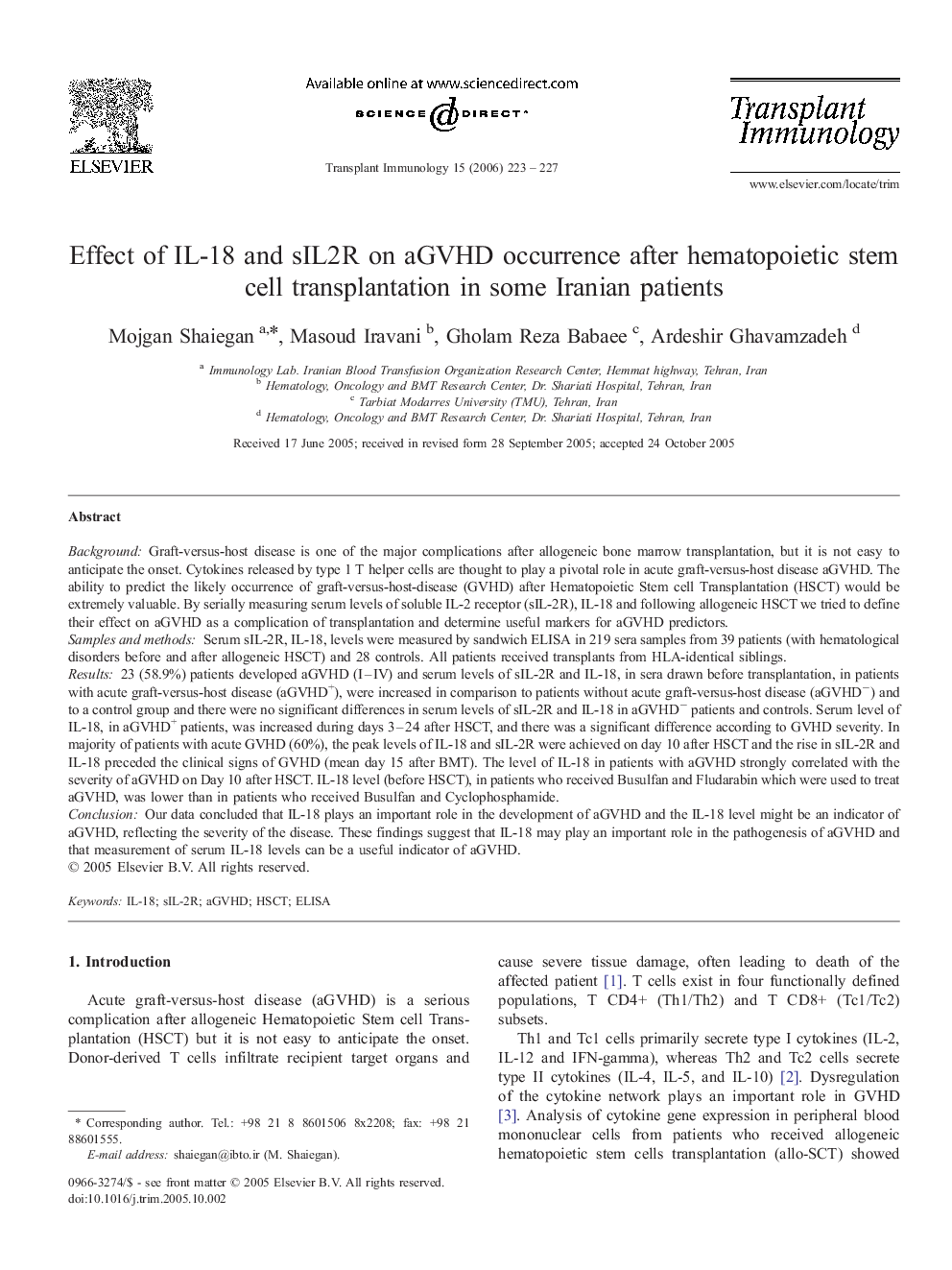| Article ID | Journal | Published Year | Pages | File Type |
|---|---|---|---|---|
| 3392636 | Transplant Immunology | 2006 | 5 Pages |
BackgroundGraft-versus-host disease is one of the major complications after allogeneic bone marrow transplantation, but it is not easy to anticipate the onset. Cytokines released by type 1 T helper cells are thought to play a pivotal role in acute graft-versus-host disease aGVHD. The ability to predict the likely occurrence of graft-versus-host-disease (GVHD) after Hematopoietic Stem cell Transplantation (HSCT) would be extremely valuable. By serially measuring serum levels of soluble IL-2 receptor (sIL-2R), IL-18 and following allogeneic HSCT we tried to define their effect on aGVHD as a complication of transplantation and determine useful markers for aGVHD predictors.Samples and methodsSerum sIL-2R, IL-18, levels were measured by sandwich ELISA in 219 sera samples from 39 patients (with hematological disorders before and after allogeneic HSCT) and 28 controls. All patients received transplants from HLA-identical siblings.Results23 (58.9%) patients developed aGVHD (I–IV) and serum levels of sIL-2R and IL-18, in sera drawn before transplantation, in patients with acute graft-versus-host disease (aGVHD+), were increased in comparison to patients without acute graft-versus-host disease (aGVHD−) and to a control group and there were no significant differences in serum levels of sIL-2R and IL-18 in aGVHD− patients and controls. Serum level of IL-18, in aGVHD+ patients, was increased during days 3–24 after HSCT, and there was a significant difference according to GVHD severity. In majority of patients with acute GVHD (60%), the peak levels of IL-18 and sIL-2R were achieved on day 10 after HSCT and the rise in sIL-2R and IL-18 preceded the clinical signs of GVHD (mean day 15 after BMT). The level of IL-18 in patients with aGVHD strongly correlated with the severity of aGVHD on Day 10 after HSCT. IL-18 level (before HSCT), in patients who received Busulfan and Fludarabin which were used to treat aGVHD, was lower than in patients who received Busulfan and Cyclophosphamide.ConclusionOur data concluded that IL-18 plays an important role in the development of aGVHD and the IL-18 level might be an indicator of aGVHD, reflecting the severity of the disease. These findings suggest that IL-18 may play an important role in the pathogenesis of aGVHD and that measurement of serum IL-18 levels can be a useful indicator of aGVHD.
